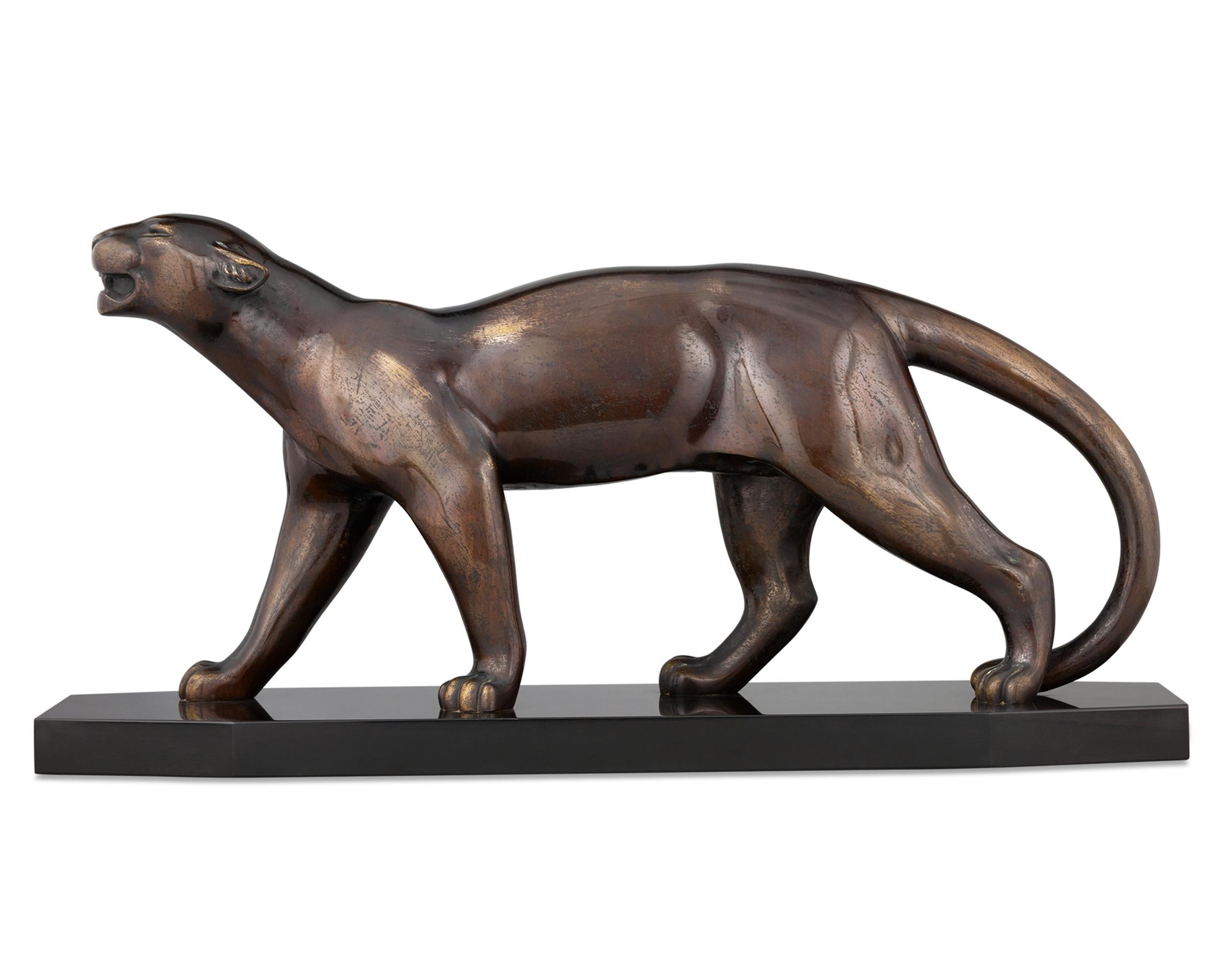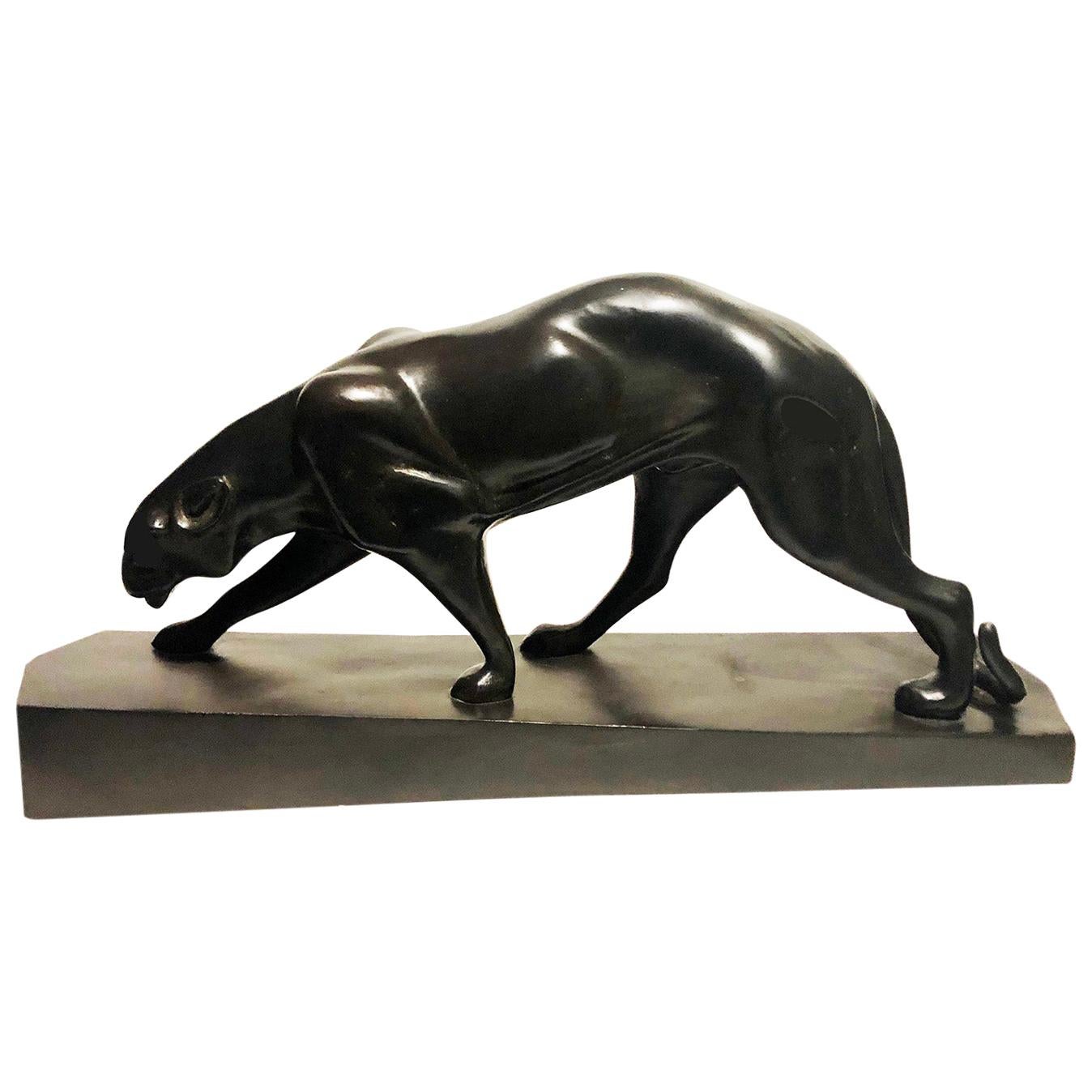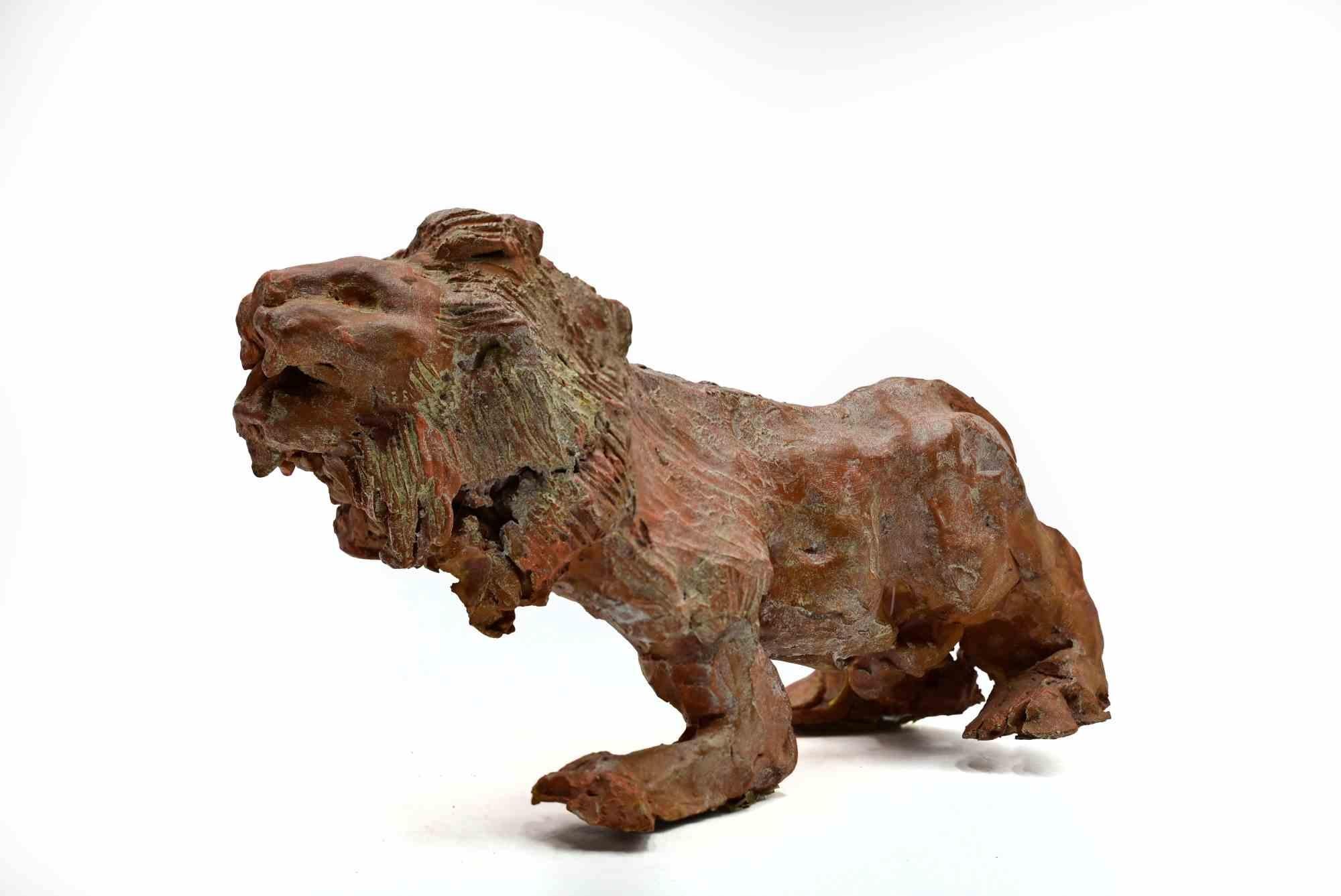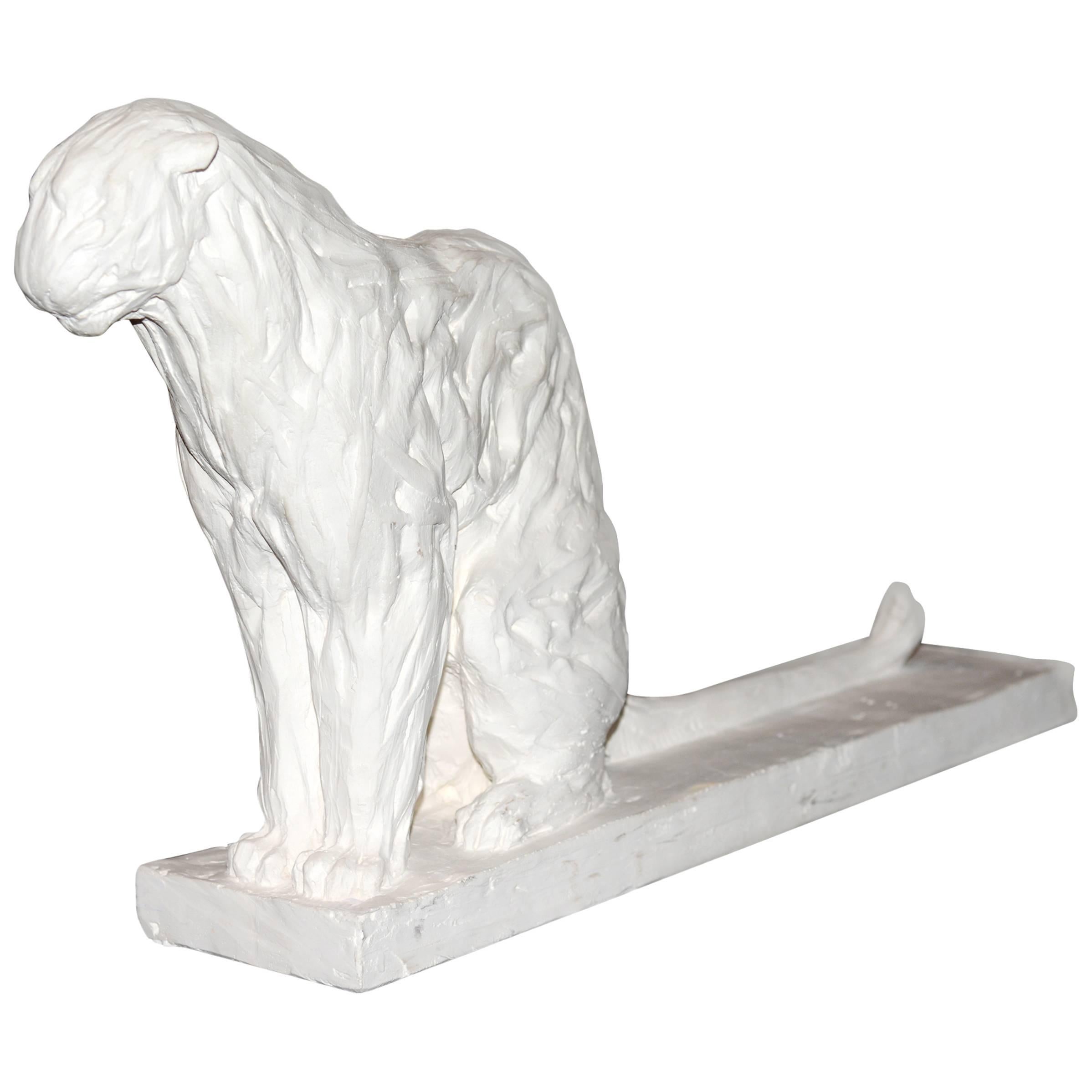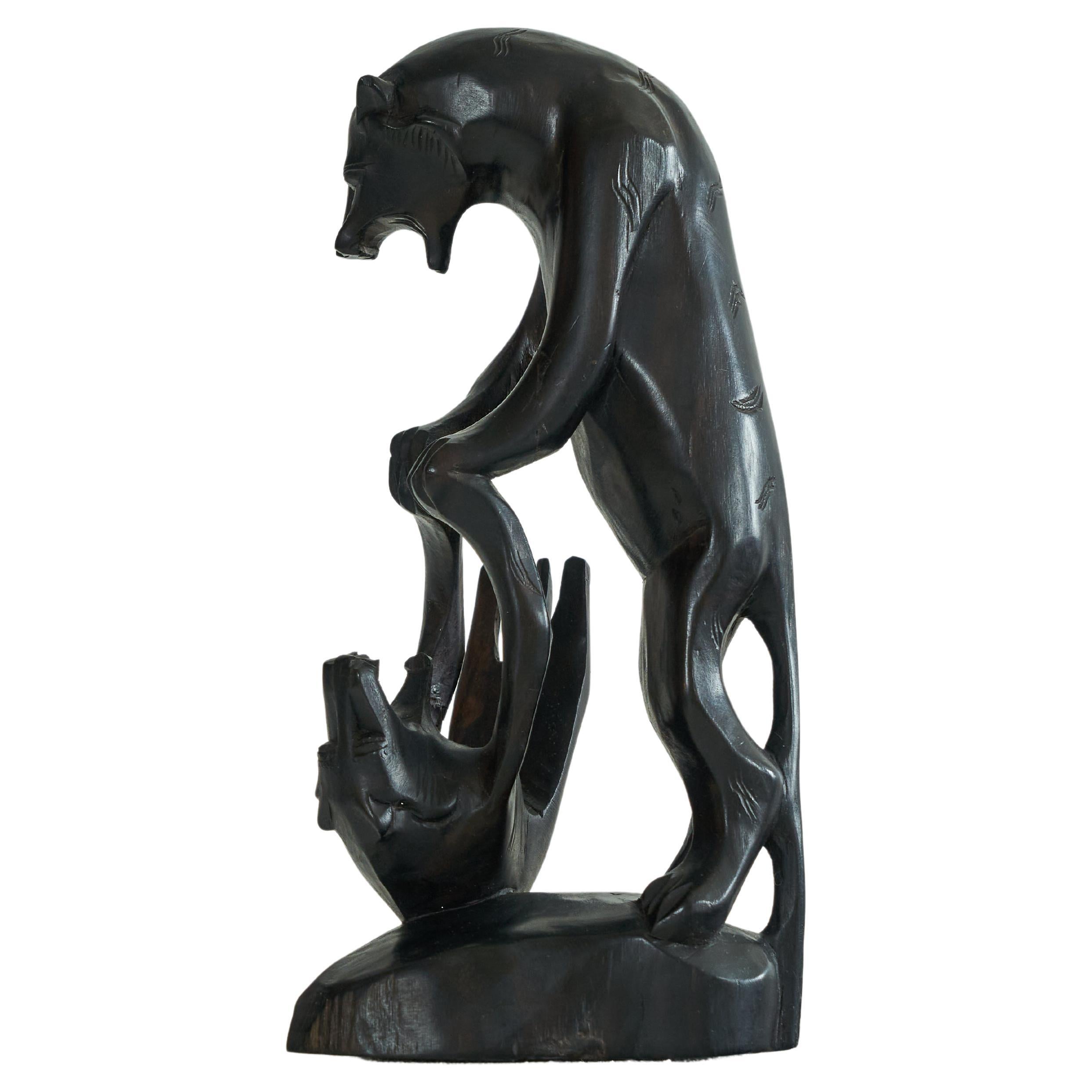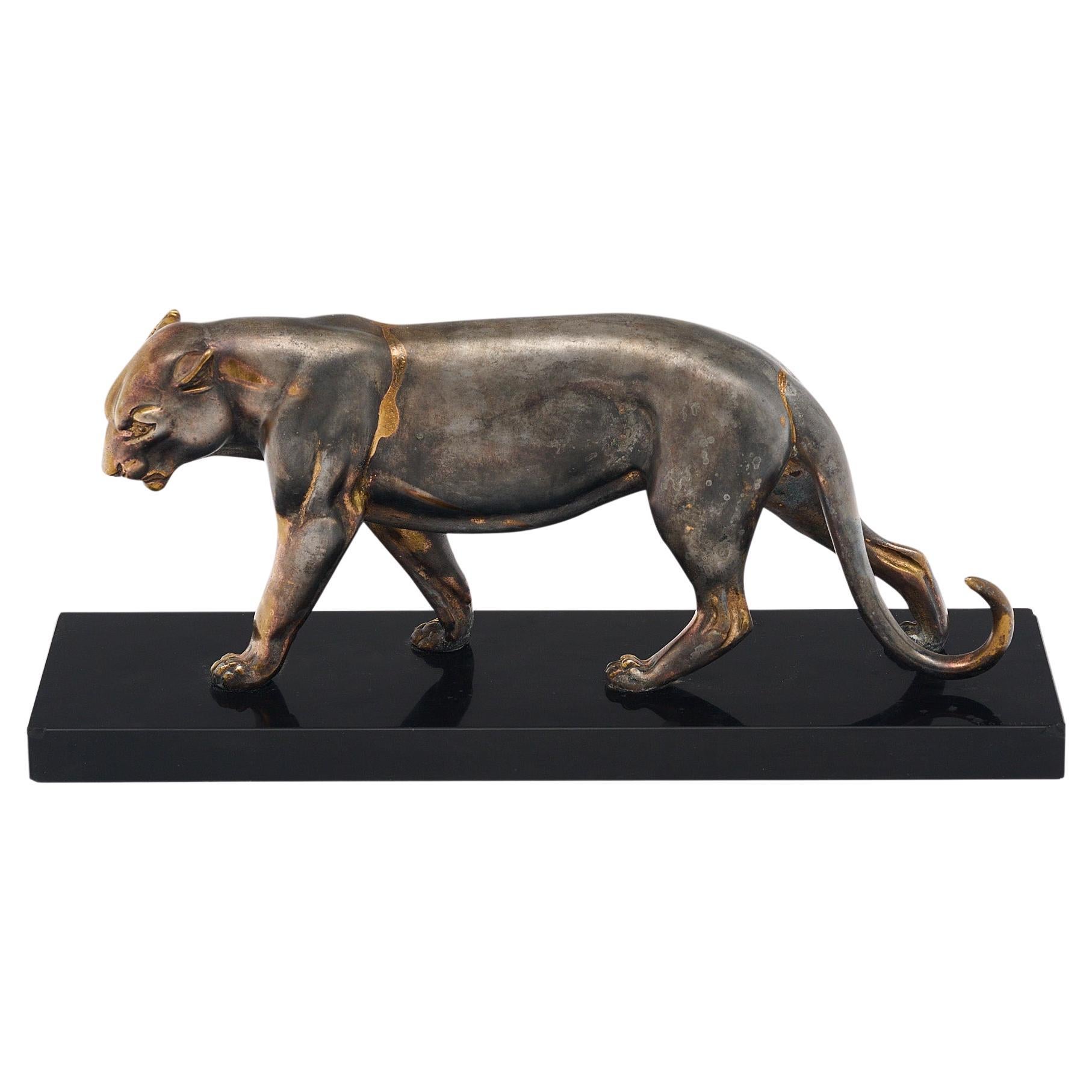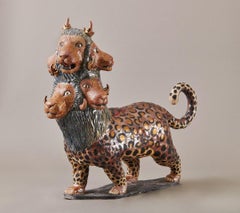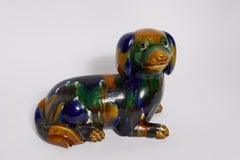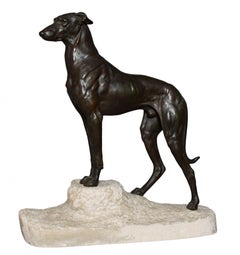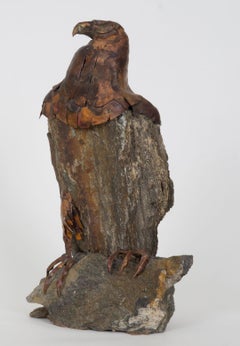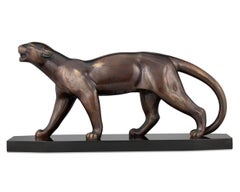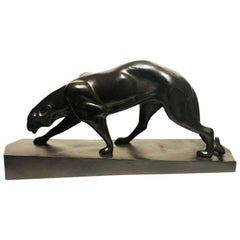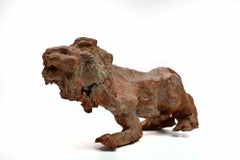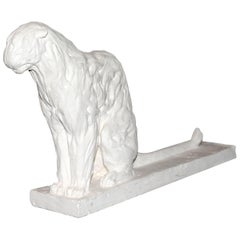Items Similar to Brutalist Late 20th Century Figurative Panther Sculpture
Video Loading
Want more images or videos?
Request additional images or videos from the seller
1 of 14
Alexsander DanelBrutalist Late 20th Century Figurative Panther Sculpture1996
1996
$1,500
£1,139.90
€1,311.94
CA$2,146.58
A$2,358.47
CHF 1,216.25
MX$28,256.88
NOK 15,442.62
SEK 14,492.27
DKK 9,798.33
About the Item
Alexsander Danel (Estonian, 1940-2001)
Brutalist Panther Sculpture, 1996
Signed 'Danel' and 'Austin Sculpture' to back leg
13.5 x 16.5 inches
Alexsander Danel was born in Estonia and graduated from both the Moscow Industrial Arts School and the Moscow Fine Arts Academy. He earned many awards and distinctions in the Soviet Union, including "Best Work of the Year" in 1973 for his monumental work commemorating the history of the Russian Wars, installed in Kirov. Alexsander Danel emigrated to the U.S. in 1976, after spending a year in Rome where he sculpted set designs for Fellini's "Cassanova" and the Napoli Theater production of "Aida". After settling in New York, he completed commissions for Rockefeller Plaza and Radio City Music Hall. In 1992, he held his first one person show exhibiting computer generated art at a Soho art gallery in New York City. He was a principal sculptor for Austin from 1981 until his death in 2001.
About the Seller
5.0
Platinum Seller
Premium sellers with a 4.7+ rating and 24-hour response times
Established in 1975
1stDibs seller since 2022
39 sales on 1stDibs
Typical response time: <1 hour
- ShippingRetrieving quote...Shipping from: Beachwood, OH
- Return Policy
Authenticity Guarantee
In the unlikely event there’s an issue with an item’s authenticity, contact us within 1 year for a full refund. DetailsMoney-Back Guarantee
If your item is not as described, is damaged in transit, or does not arrive, contact us within 7 days for a full refund. Details24-Hour Cancellation
You have a 24-hour grace period in which to reconsider your purchase, with no questions asked.Vetted Professional Sellers
Our world-class sellers must adhere to strict standards for service and quality, maintaining the integrity of our listings.Price-Match Guarantee
If you find that a seller listed the same item for a lower price elsewhere, we’ll match it.Trusted Global Delivery
Our best-in-class carrier network provides specialized shipping options worldwide, including custom delivery.More From This Seller
View AllBeast of the Apocalypse, 21st Century Contemporary Ceramic of Animal
Located in Beachwood, OH
Kristen Newell (American, b. 1989)
Beast of the Apocalypse, 2019
Glazed stoneware, epoxy and acrylic
Signed and dated on bottom
24 x 28 x 10 inches
Kri...
Category
2010s Figurative Sculptures
Materials
Stoneware, Epoxy Resin, Acrylic
Early 20th Century drip glaze ceramic dog sculpture in the style of Tang/Sancai
Located in Beachwood, OH
Dog in the style of Tang/Sancai, Early 20th Century
Drip glaze ceramic
9.5 x 13 inches
Sancai is a versatile type of decoration on Chinese pottery using glazes or slip, predominantl...
Category
Early 20th Century Figurative Sculptures
Materials
Ceramic, Glaze
1930 French Bronze Figure of a Lurcher Dog on Stone Base
Located in Beachwood, OH
Jules Edmond Masson (French, 1871–1932)
Bronze Figure of a Lurcher Dog, 1930
Bronze with brownish green patination, on a fitted stone base
The base inset with a bronze plaque reading...
Category
1930s Figurative Sculptures
Materials
Stone, Bronze
20th Century Stone and Copper Eagle, Animal/Bird Sculpture
By Lubomir Tomaszewski
Located in Beachwood, OH
Lubomir Tomaszewski (Polish-American, 1923-2018)
Eagle
Stone and copper
Signed on back
18 x 11 x 7 inches
Lubomir Wojciech Tomaszewski was a Polish-American painter, sculptor and designer born in Warsaw, Poland.
Son of Lubomir and Lucyna née Bartłomiejczyk. He was an alumnus of the Warsaw Academy of Fine Arts. Student of the Warsaw University of Technology In 1966 he emigrated to New York City in the United States. In the 1970s, he moved to Easton, Connecticut where he lived until his death in 2018.
He fought as a soldier of Polish Home Army through all the 63 days of Warsaw Uprising. He was a commander of anti-tank unit. He witnessed the death of his younger brother and many friends.
Tomaszewski started his artistic work in the 1950s in Institute of Industrial Design in Warsaw, an innovative institution with an aim to create modern living in post-war Poland. He cooperated with designers like Henryk Jędrasiak, Mieczysław Naruszewicz i Hanna Orthwein. He created popular porcelain figurines and "Ina" and "Dorota" coffee sets, which were exhibited at the International Exhibition of the Board of the Industrial Designers’ Association (ICSID) in Paris in 1963.
In 1994, he established an international art movement called Emotionalism, together with a group of painters, sculptors, photographers and even dancers and musicians. He started creating his unique fire and smoke paintings. His sculptures were recognized by The New York Times in 1975:
“The most effective among the pieces are the animals or birds that convey the state of tension or movement or brute strength, something that struggles against gravity to maintain its force.”
Tomaszewski took part in over 150 individual and group exhibitions around the world. His works are in renowned museum and private art collections of, among others: National Museum in Warsaw, National Museum in Cracow, Warsaw Uprising Museum, Hale Museum in Germany, Robert Marston, Rockefeller Family and Jimmy Carter.
Awards:
1955 – First prize for sculpture in surrounding of the Palace of Culture and Science in Warsaw
1964 – Golden Cross for accomplishments in industrial design, Poland
1984 – Award for Achievement in Sculpture, Perspective Magazine, USA
1991 – Best in Show O.A.F., Bruce Museum, USA
2005 – First reward for sculpture ‘Spectrum’, New Canaan Society for the Arts, USA
2006 – People’s Choice Award, National Sculpture Society, New York
2008 – First Award for a sculpture ‘Mythical Giant’, New Canaan Society for the Arts, USA
2010 – American Society of Contemporary Artists, New York, award for sculpture ‘Joy of Dance’
2011 – Second prize for sculpture ‘Illusion’, New Canaan Society for the Arts, USA
2013 – First prize for the sculpture ‘Flight above the Stage’ od New Canaan Society for the Arts
2014 – First prize for ‘Music of the Forest’ from New Canaan Society for the Arts, USA
2014 – ‘Lifetime Achievement Award’, University of Bridgeport
2014 – Award for ‘Merit in Inventiveness’
2014 – Gold Medal ‘Gloria Artis’
2016 – ‘Outstanding Pole’
2017 – Medal ‘Ignacy Paderewski Arts and Music Award’ USA
Exhibitions:
1964 – Sculpture...
Category
Late 20th Century Figurative Sculptures
Materials
Stone, Copper
Mid-Century Ceramic Sculpture of a Seated Female, Cleveland School Artist
Located in Beachwood, OH
Walter Sinz (American, 1881-1966)
Seated Female, c. 1940
Ceramic
6 x 3.5 x 3.5 inches
Walter A. Sinz was an American sculptor born in Cleveland, Ohio on July 13, 1881. Sinz’s fathe...
Category
1940s Figurative Sculptures
Materials
Ceramic
Marble Figure of a Recumbent Lion, 19th Century
Located in Beachwood, OH
Figure of Recumbent Lion, 19th Century
Carved gray veined marble
4.5 x 8 x 4.5 inches
Category
19th Century Figurative Sculptures
Materials
Marble
You May Also Like
Panther by Émile Louis Bracquemond
Located in New Orleans, LA
Émile Louis Bracquemond
1889-1970 French
Panther
Bronze
This exquisite bronze sculpture of a panther was created by French sculptor Émile Louis Bracquemond. The artist was clearl...
Category
20th Century Art Deco Figurative Sculptures
Materials
Bronze
Price Upon Request
Art Deco Sculpture of a Panther
Located in Bridgewater, CT
Large Art Deco, black patina, sculpture of a marching panther.
Category
Late 20th Century Unknown Art Deco Animal Sculptures
Materials
Metal
Lion - Sculpture by Sirio Pellegrini - 1960s
Located in Roma, IT
Painted Terracotta sculpture realized by Sirio Pellegrini in 1960s.
Good condition.
Sirio Pellegrini, born in Rome on March 1, 1922, of Abruzzo origins (Capestrano), spent his chil...
Category
1960s Modern Figurative Sculptures
Materials
Terracotta
Sculpture Panther in Plaster Limited Edition 45/100 by J.B Vandame, 2015
Located in Paris, FR
Sculpture panther in plaster.
Limited and numerated edition 45/100.
Made in France By J.B Vandame in 2015.
Category
21st Century and Contemporary French Animal Sculptures
Materials
Plaster
Art Deco Fighting Panthers Sculpture in Wood
Located in Tilburg, NL
Art Deco Fighting Panthers Sculpture in Wood. First half of the 20th century.
Beautifully sculpted art deco art piece depicting two fighting panthers. Made of beautiful dark colored wood.
Dynamic and lifelike in form and execution. This Art Deco sculpture is interesting from all angles and amazes at every corner. Two panthers can be seen fighting. An adult panther stands triumphantly over a smaller and reclining panther...
Category
Early 20th Century Unknown Art Deco Figurative Sculptures
Materials
Wood
French Art Deco Period Panther Statue
Located in Austin, TX
Sculpture of a panther from Art Deco period France made of metal with a black marble base. This figure is in a natural walking pose and is quite eye catching. It features the origina...
Category
Vintage 1940s French Art Deco Animal Sculptures
Materials
Marble, Bronze
